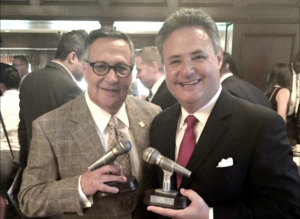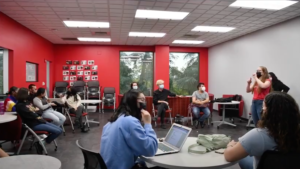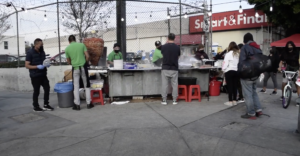Animation isn’t just for kids. These animators are out to prove it.
At this year’s Oscars, on the same night that the Disney film “Encanto” won Best Animated Feature, presenters Lily James, Halle Bailey, and Naomi Scott — who’ve all played Disney princesses — seemed to make jokes at the film’s expense.
“So many kids watch these movies over and over…,” they said, “and over and over and over and over… I think some parents out there know exactly what we’re talking about.”
The quote rubbed many animators, and fans of animated films, the wrong way. It highlighted a feeling that animated films don’t get the same recognition as live action films, and often get snubbed at award ceremonies.
But why aren’t animators recognized? In a global pandemic that put live-action filming on hold — directors, actors, producers all had to stay at home — animation studios were able to carry on to make millions of dollars.
“They’ve (Animation Studios) made more money than any studio out there,” said Aglaia Mortcheva, an animator and CSUN Professor. “Also Pixar probably has the most humanistic stories in cinema in the last ten years.”
But the notion that animated films are primarily for children may be one of the reasons why they don’t have the reputation of live action films.
“We do have kids’ animation, but … these creators have spent so much time making these animations so that they are not [films] you have to endure,” said Victoria Davis, a journalist for the Animation World Network. “They’re incredibly insightful and educational. And it’s pretty amazing to me that people still think that this is a kids genre.”
Despite animation’s reputation as a genre for children, there are animated shows intended for adults like “The Simpsons” and “South Park.”
“The Simpsons” has been airing since 1989 and “South Park” has been airing since 1997. Some of the longest running shows are animated programs that not only make a lot of money but also shows that have huge fan bases.
During the pandemic, animators kept producing film for their shows since they didn’t need to be in-person to film. Even though animators continued to write, draw, and organize animated shows, the recognition is still not there compared to live action films.
One issue the animation industry faces is pay equity.
According to The Real News Network, animators “have struggled with gross pay inequity, limited opportunities for advancement, and fewer crediting and residual compensation guarantees than their live-action counterparts.”
These factors often push animators to graduate to live action film, they say, since the pay and recognition is better.
“We know [animation] is so labor intensive,” said Kristin Donner, an animator for Nickelodeon & Warner Brothers, “and it takes so many people to create just a minute. These are real people with real bills to pay and need to be compensated accordingly.”
One small way to improve animators’ recognition?
Oscar winning animators Phil Lord and Christopher Miller suggested the Academy Awards could invite a respected filmmaker to present the Best Animated Film award.
“Framing the five Academy Award nominees for Best Animated Feature as a corporate product for kids,” they wrote, “that parents must begrudgingly endure could be dismissed as simply careless.”
This show was produced by Stephanie Gurewitz, Noe Ortega, Mica Thomas and Sophia Vasquez






